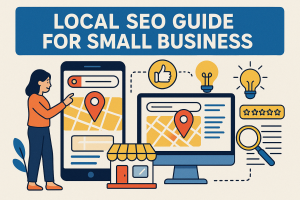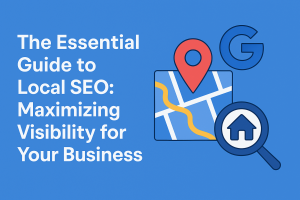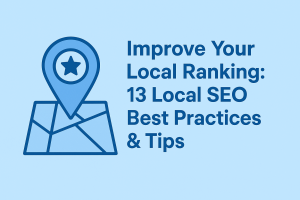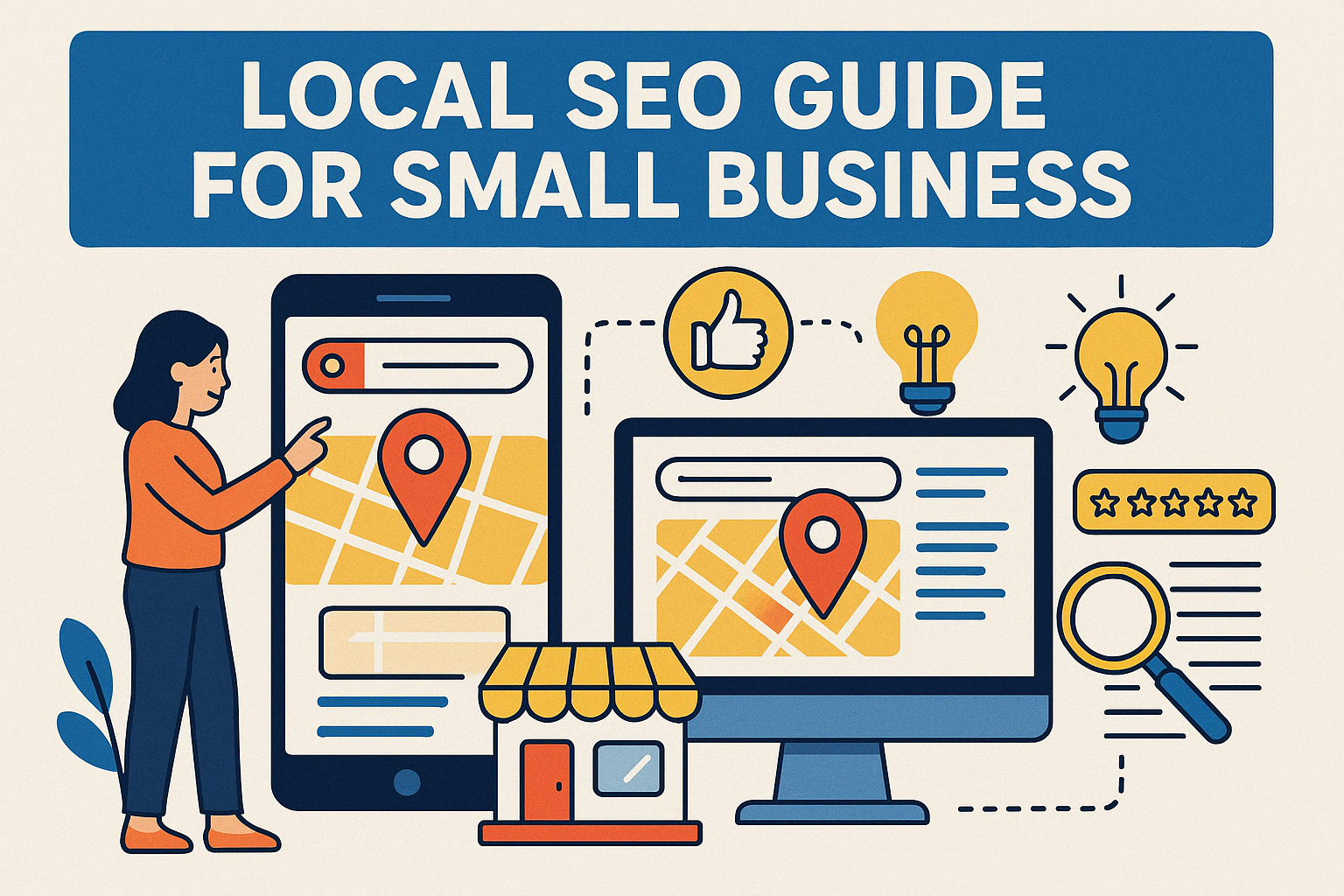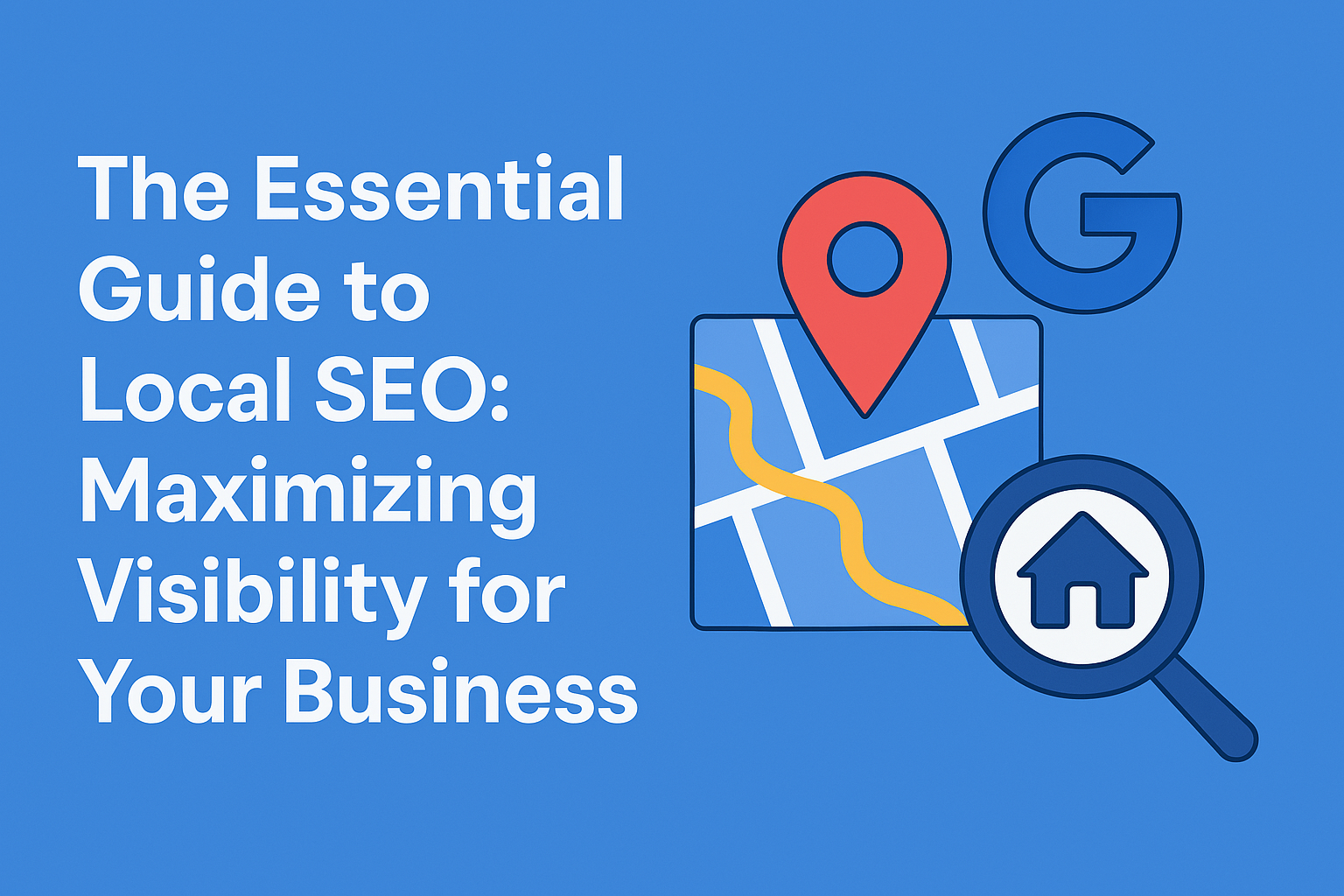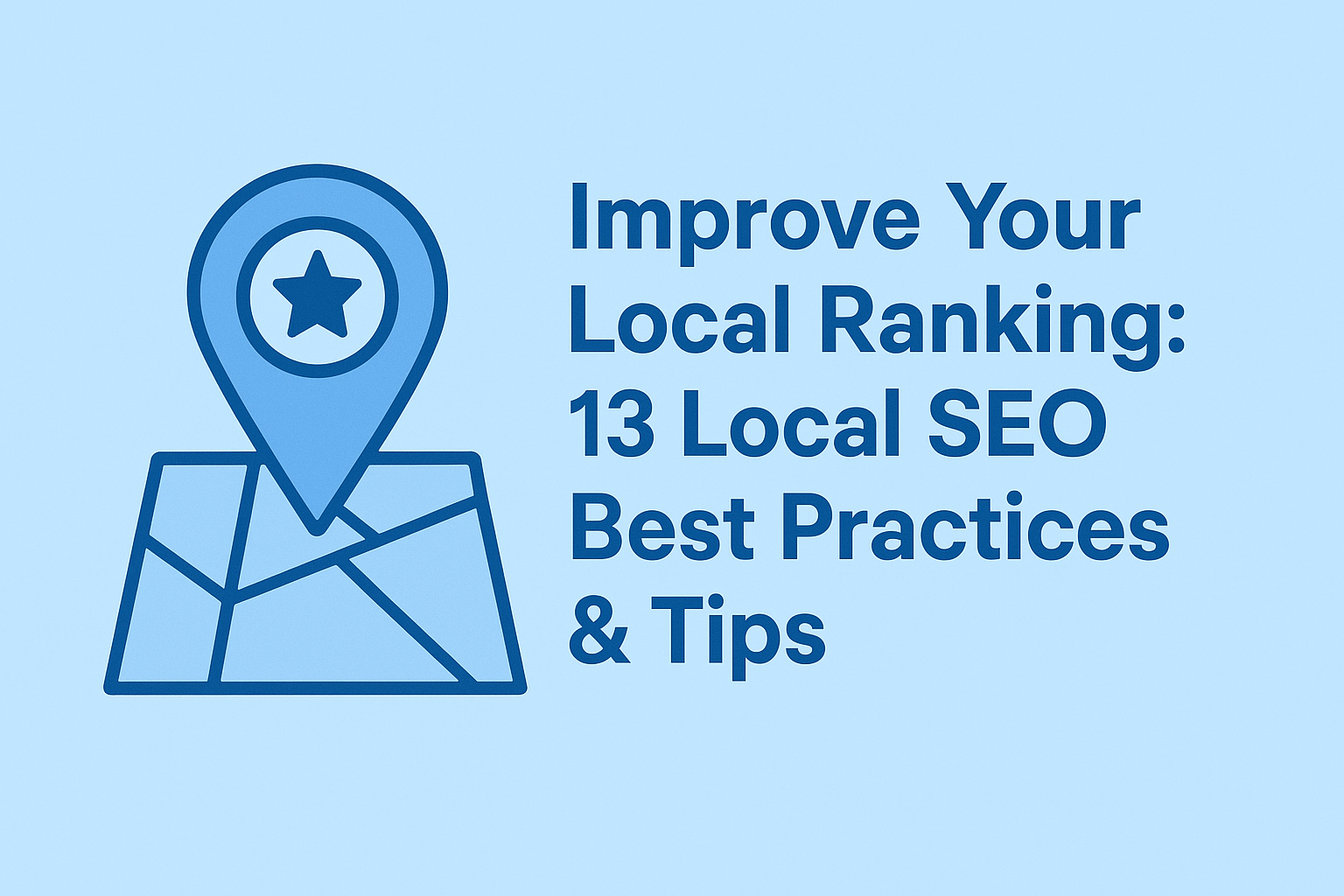Boost Local Rankings: Tips to Improve Your Local SEO for Small Businesses & Dominate Local Search

Sanya Kaushal
Sanya is a seasoned SEO and content writing expert with a 10 years of experience. She is skillfully driving organic growth and crafting search-optimized content that engages audiences and elevates brand visibility across industries.
Boost your small business’s local SEO by optimizing your Google Business Profile, using local keywords like “near me,” and ensuring mobile-friendly website speed. Collect reviews, keep NAP (Name, Address, Phone) consistent, and engage locally via events. Track results with Google Analytics. Simple, consistent steps help you outrank competitors and attract nearby customers.
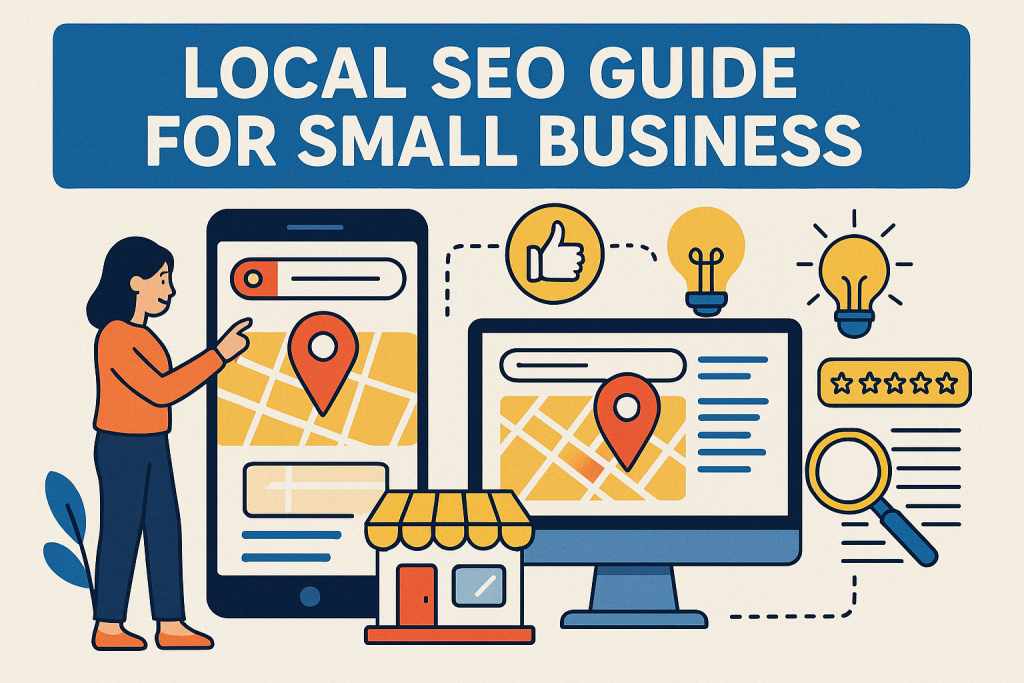
Why Local SEO Matters for Small Business Growth
I’m Sanya Kaushal, an SEO and content writing expert with 10 years of experience helping small businesses like yours get noticed online.
Think of me as your friendly guide to crushing local SEO. No jargon, no fluff—just simple, actionable advice.
Let’s dive in!
Local SEO vs. Traditional SEO: Key Differences
Let’s say that you run a coffee shop. A customer Googles “best latte near me.” Now, if your business doesn’t show up on Google My Business, they’ll walk right past you to the café, which does show up and is right down the street.
This is the reason why local SEO matters. It’s like putting a giant neon sign on your store for nearby customers.
Here’s how local SEO genuinely helps you:
Your business shows up when people search nearby.
You can compete with bigger chains (even with a tiny budget).
It helps you build trust within your community.
I’ve seen multiple small businesses double their footfall just with some basic local SEO. You can get you there too.
Local SEO Ranking Factors for Higher Visibility
Why should you choose Local SEO vs Traditional SEO, which has long worked out for small businesses?
Well, traditional SEO is like casting a nationwide net; on the other hand, Local SEO is similar to fishing in your backyard pond.
Let’s understand the difference in more detail.
Local SEO targets customers in your area (e.g., “dentist in Austin”).
Traditional SEO targets broader terms nationwide or within two pr more different states (e.g., “how to whiten teeth”).
If you ask me, for small businesses, local SEO is the golden ticket. You don’t need to rank “national” and waste your effort — just win your neighborhood and rank in it.
1. Optimize Your Google My Business (GMB) Profile for Local Search
A Google My Business (GMB) profile is like your digital storefront. If it’s messy or empty, customers will bounce right off and move to another one.
Here’s how to fix it:
Claim your profile – Go to Google My Business Profile and verify ownership.
Fill in all the details – Hours, address, phone, website, photos of your products.
Add posts weekly – Share updates, offers, or events (like “Free cookie with coffee this Friday!”).
My Pro tip: Use keywords in your GMB’s description, like “family-owned bakery in Dallas.”
2. Leverage Google Maps for Enhanced Local Rankings
Whenever someone searches for a “plumber near me,” Google Maps shows the top 3 results. Your GMB profile can also help you be there in top results.
Get reviews – Ask happy customers to leave 5-star reviews. Respond to every review (yes, even the bad ones).
Use local keywords in your profile – Example: “affordable electrician in Miami.”
Update your location pin – If you move, fix it ASAP.
3. Local Keyword Research for Targeted Traffic
If you don’t have paid or sophisticated tools, it’s ok. You can use these strategies to find the right Keywords.
Start with these free tricks:
Google autocomplete – Type “coffee shop in…” and see what Google suggests.
Check competitors – What keywords are they using on their website?
Answer questions – Include phrases like “near [your city]” or “best [service] in [city].”
Example: “dog grooming Tampa” instead of “dog grooming.”
What is a Winning Local SEO Strategy for Small Businesses?
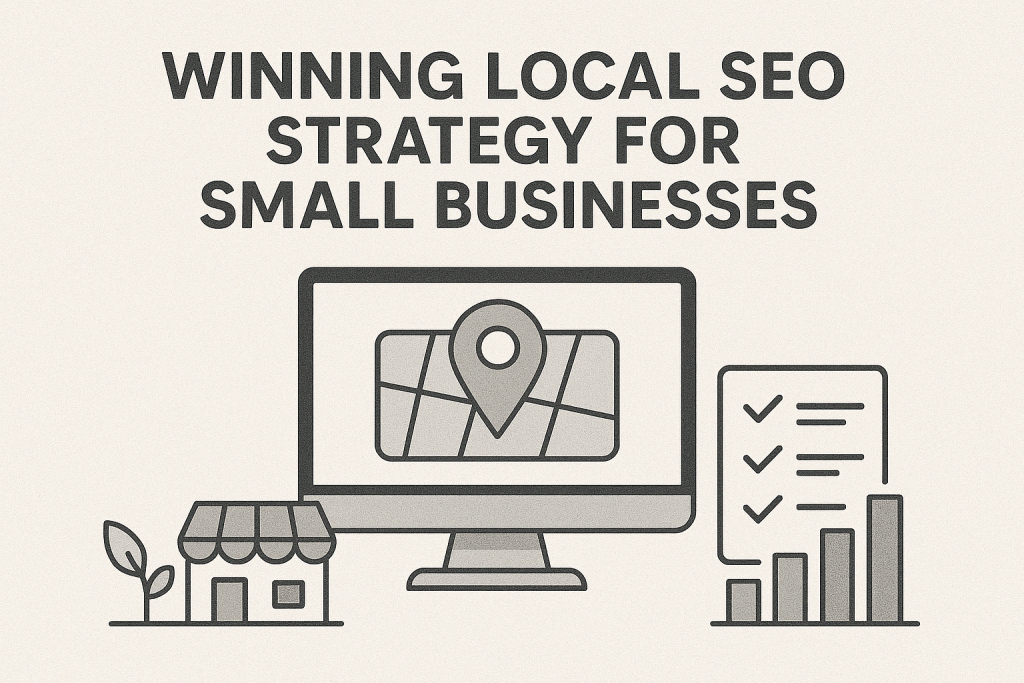
1. Creating Content That Boosts Local Organic Rankings
To rank higher on ERP’s it’s important to write as if you are talking to a neighbour. This in my opinion is the most important aspect part of your local SEO strategy.
For example:
Blog post: “5 Best Parks in Austin for Picnics (Local Guide).”
Service page: “Affordable HVAC Services in Phoenix | [Your Business Name].”
Do not forget to include your city name, landmarks, or neighborhoods. Google loves some local flavor!
2. Using Schema Markup for Local Business Optimization
“Schema Markeup” well I know it sounds like a tough nut to crack, but it’s just code that tells Google, “Hey, I’m a local business!”
You can use tools like Schema.org or plugins (if you use WordPress) to add:
Your business hours.
Address.
Customer reviews.
3. Hosting/Promoting Local Events to Build Community Presence
Local eents can be a great way to promote your local business and spread awareness. Here’s what you can do – Host a “Customer Appreciation Day” or sponsor a Little League team.
Then, post about it on your website and social media. Google notices such things and will bring in more traffic when you’re active in your neighbourhood.
Technical Expertise for Dominating Local Search Engines
1. Mobile Optimization Strategies for Local SEO
Over 60% of “near me” searches happen on phones. This means that if your site takes 5 more than seconds to load, you’ve already lost customers. Here’s what you should do to make sure that your website is mobile friendly.
Use Google’s Mobile-Friendly Test to check your site, speed and other parameters.
Simplify menus and buttons, with a simple user interface.
2. Ensuring NAP Consistency Across Local Directories
Over 60% of “near me” searches happen on phones. This means that if your site takes 5 more than seconds to load, you’ve already lost customers. Here’s what you should do to make sure that your website is mobile friendly.
Use Google’s Mobile-Friendly Test to check your site, speed and other parameters.
Simplify menus and buttons, with a simple user interface.
3. Website Speed Optimization
A slow site kills rankings. Use Google PageSpeed Insights to find issues and fix them. Here are some ways you can do it yourself without hiring a developer.
Compress images
Delete unused plugins
Switch to a faster hosting provider.
Local SEO Tips to Improve Your Rankings
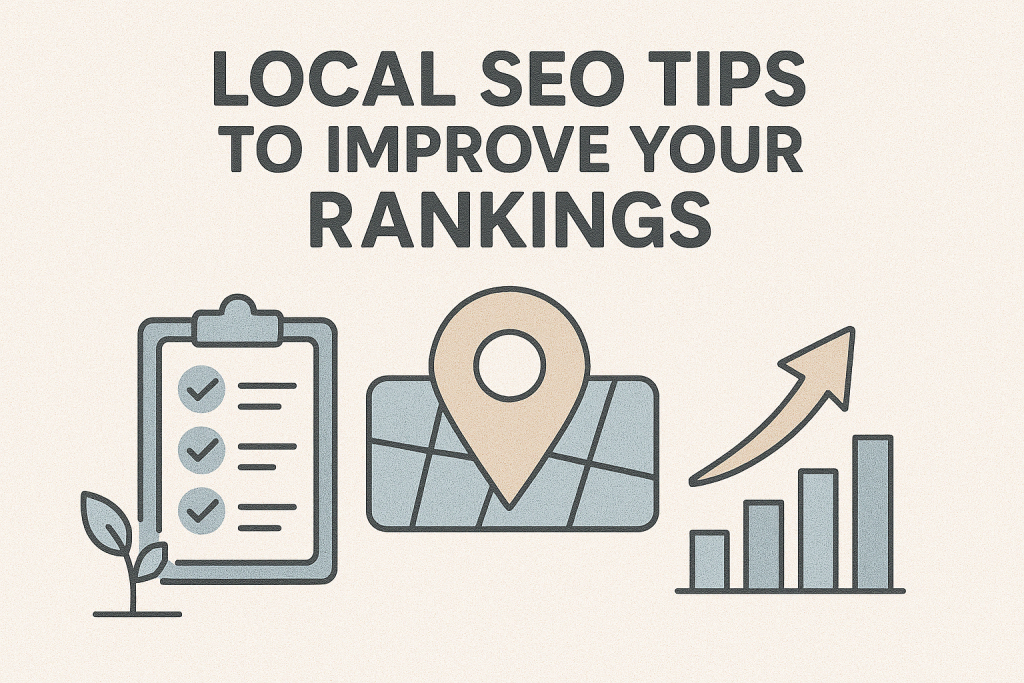
1. Managing Online Reviews for Local Trust & Credibility
Reviews are social proof, and your credibility is based on them. Whenever you complete a project, Politely ask customers to leave positive feedback. You can also offer a small discount in exchange—it works! Try it out and stop with the discounts if it’s not working for you.
Respond to negative reviews calmly: It’s important that you respond with dignity and do not get caught up in the narrative. Here’s a good response to a negative review: “We’re sorry you had a bad experience. Let’s fix this!”
2. Earning Quality Backlinks from Local Business Partners
Well, there is no substitute to good old backlinks. You can partner with nearby businesses and ask them for backlinks pointing to your website.
For Example: A florist links to your wedding venue on their blog. You can offer to write a guest post for them in return, OR and this might get me in trouble- promise them a backlink from a website owner you know. This won’t trigger Google’s reciprocal backlink penalty.
3. Optimizing for "Near Me" and Voice Search Queries
With Google’s Gemini and Amazon’s Alexa, the future of Voice search is extremely bright. People often ask these AI voice assistants about good spots nearby. For example, “Where’s the closest pizza place?” You should optimize for phrases like:
“Pizza delivery near me.”
“Best pizza in [city] open now.”
More Advanced Tips To Future-Proof Your Local SEO
1. Adapting to Local Search Engine Algorithm Changes
Google updates its algorithm 500+ times a year. Yup, you heard that right. Well, realistically speaking, it’s closer to 100. So, you should stay updated by following SEO blogs like Search Engine Journal, Search Engine Land, and other Local SEO forums.
2. Integrating Social Media with Local SEO Efforts
Well, we’ve discussed local events earlier. This concept is similar.
You should post photos of your team at local events and be hyperactive on social media. Tag your city’s Instagram pages.
Most importantly, use hashtags like #SupportLocal or #[YourCity]Eats.
3. Multi-Location Local SEO Management Techniques
Now, in case you have multiple locations, you don’t need to create separate GMB profiles and pages for each. Simply add another location along with the address and voila. You have another location ready to go.
Note: You should always avoid posting duplicate content—customize each page with local details.
Measuring and Improving Your Local SEO Performance
1. Use Tools to Track Local Organic Search Progress
Well, after you’ve done everything necessary to brinf more traffic to your Google My Business profile, it’s time to measure the outcome.
Here’s how you can do it.
1. Use Tools to Track Local Organic Search Progress
Google Analytics: See which keywords bring traffic.
Google Search Console: Find technical errors.
BrightLocal: Track local rankings.
2. Analyze Google Business Profile Insights Effectively
Check your GBP dashboard weekly and look for:
How many people called you, impressions, and directions to your location.
Popular search terms (e.g., “emergency plumber”).
3. Benchmarking Against Local Competitors' SEO Strategies
Last but not the least, benchmark against your competetors. Here’s how you can do it:
Type your main keyword into Google. See
who’s ranking above you.
What are they doing better?
Copy their tactics (but make it better).
Common Local SEO Mistakes Small Businesses Must Avoid
1. Neglecting Google Business Profile Updates
Posting once a year?
Well, now thats what I call a big mistake. Start updating your GBP weekly with fresh photos, offers, and events.
2. Inconsistent Local Citation Building Practices
Well, don’t list your bakery as “Sandy’s Cakes” on Yelp and “Sandy Cakery” on Google. Keep your brand consistent. Make sure that you have the same NAP (name, address & phone number) everywhere.
3. Overlooking Localized Content Opportunities
Not mentioning your city? Well, you’re invisible. Sprinkle location-specific keywords naturally into your website and make sure that it has the right schema.
The Future of Local SEO: Trends Small Businesses Should Watch Out
1. AI-Driven Personalization in Local Search Results
Google’s AI is learning to show hyper-relevant results. For Example, If it rains, your umbrella repair shop might pop up automatically.
2. Hyperlocal Targeting Strategies for Neighborhood Domination
Target specific streets or ZIP codes. Example: “Dry cleaning service in Downtown Austin” instead of “Austin.”
3. Visual Search Optimization for Local Business Discovery
People are searching with images (e.g., snapping a photo of a broken pipe to find plumbers). Add alt text to your images like “leak repair in Houston.”
Conclusion: Your Roadmap to Local SEO Dominance
To wrap it up, here are some pointers I’ll leave you with. Go through them and remeber each step counts.
Immediate Steps to Improve Your Local SEO Today
Claim your Google Business Profile.
Ask for 5 reviews.
Fix NAP inconsistencies.
Long-Term Plan for Sustained Local Search Success
Publish local content monthly.
Monitor competitors.
Adapt to new trends.

